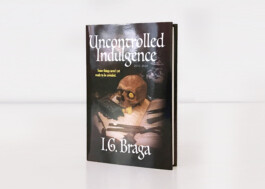The Incomplete Towers of the City Where Imaginary Lovers Never Find Rest
Amsterdam, March 30, 2020
The city I’d like to tell you about was destroyed and then rebuilt several times. The last recorded disaster was, according to an imaginary scale of destruction, the most remarkable. There was a brutal bombing: flames burned relentlessly right to the foundations for ten days and ten nights. The surviving citizens had almost lost hope. Nonetheless, in the course of the years to come, workers, who struggled with rebuilding homes and monuments, managed to slowly raise the city out of the ruins. It’s a familiar story to many a metropolis.
Layers of stones, bricks, concrete, debris, iron, sand, etc. belonging to different eras make up the seen and the unseen: foundations, houses, hills, skylines, tragedies and love affairs. I am not naming or referring to a particular place, but rather describing a chimeric one. It’s a collage or a superposition of words, events and stories that unite and/or divide the residential and social units of the known world. I’m thinking of a place where the towers were left in an odd state of incompleteness, irregularly divided vertically or horizontally or both, an ideal imaginary city where these leftover construction materials are of the utmost importance to lovers who are both here as well as in other places on earth and who are seemingly lost and yet find themselves.
It’s a city where bombed buildings are slowly and partially rebuilt with bricks and stones found here and there. It is impossible to sort through the piles of bricks as the process would be even slower and more unnerving. Sometimes it is necessary to resort to new materials. When the buildings are completed, the new bricks, with their different color and texture are immediately noticeable. On some of the stones or bricks initials are engraved and names or dates are etched. Before spray paint, people would carve on public (vertical) surfaces using sharp objects to leave a fleeting trace of life.
The first signs of organized civilization are engraved on large stone slabs. Following the introduction of more sophisticated methods of sharing knowledge, the stonecutter’s work has become superfluous and his backbreaking technique is now unable to record an increasingly growing number of documents. Graffiti written on stone or a wall has therefore gone backwards to become a primeval form of art, the representation of an instinct, the need to leave a more or less lasting trace. Someone marked a date, an important event, which today for us no longer has any meaning.
In the city described above some of the graffiti is found in a remarkably high place after the reconstruction, as if the building had grown from the ground up like a tree. Anachronisms, joy, past loves and sorrows, these stories have remained inscribed in stone and are indecipherable. Buildings have been reconstructed, but the tales of their tenants haven’t been. Experiences now forgotten were sketched and then abandoned in stone. Such stories have played an important part in the history of society no matter their modest and unintended role. Such events are similar to other events, some of which can be read in novels, and which are more or less scientifically reconstructed chronicles that have been recorded, perhaps by mistake, in annals or diaries. These are the stories of oversights and omissions.
Fires, earthquakes, epidemics, wars, bombings, etc. have cold-heartedly erased everything in their path without a concern for ethics. If databases had existed a thousand years ago, I wonder if we would have gone mad in the vainglorious attempt to archive and catalogue all that information. In the end, who gets to decide whether the information should be stored or deleted once neither the author nor the interested parties or their heirs are around to do it?
Today, we have massive amounts of information at our fingertips and we don’t know what to do with all of it; we don’t even know whether to believe any of it as we await confirmation. Piecing together stories from stone tablets and paper documents that have been handed down to us is an extremely risky task. What if all we learned at school was nothing but a mountain of fake news? The Egyptians behaved in this or that way, the Greeks like this and the Romans like that. It’s a very Eurocentric history. What is the difference between a novel, a series, the movie Troy (2004) and a history book? Scientific papers based on previous scientific papers. It sometimes becomes impossible to verify all the sources because the archive was incinerated in a fire or flooded by a tsunami or swallowed up by the earth.
Now there is an alternative scenario: the database has fallen victim to a cyber attack, the titles and dates of documents have been scrambled into a mess of names, numbers, values and vectors that is hard to disentangle. Rebuilding and reorganizing it would be a lengthy and demanding job. It was the same in the city where citizens collected and rearranged bricks. Information is to bricks as truth is to the lithosphere (1).
The “here and now” is enough to fill an entire life.
(1) lithosphere rigid, rocky outer layer of the Earth, consisting of the crust and the solid outermost layer of the upper mantle. It extends to a depth of about 60 miles (100 km). It is broken into about a dozen separate, rigid blocks, or plates. Slow convection currents deep within the mantle, generated by radioactive heating of the interior, are believed to cause the lateral movements of the plates (and the continents that rest on top of them) at a rate of several inches per year. (Britannica.com, last accessed on 30/03/2020)
